As leaders in hotels, bars, cafes, restaurants, catering wholesale, and importing, you’re on the front lines of a critical shift. The days of ubiquitous single-use plastic straws are rapidly coming to an end. This guide is designed to equip you with the strategic insights needed to navigate this change, ensuring compliance, enhancing your brand, and contributing to a healthier planet.
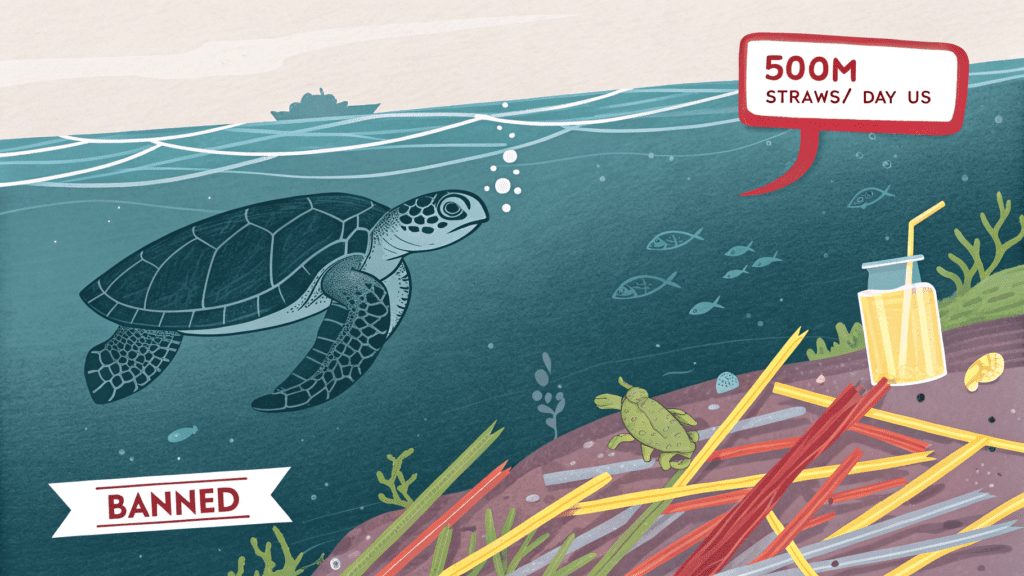
I. Introduction: The Unavoidable Shift Towards Sustainable Sipping
A. The Plastic Predicament in Foodservice: A Call for Change
Globally, hundreds of millions of single-use plastic straws are discarded daily, taking centuries to decompose and significantly contributing to environmental pollution, particularly in oceans and landfills. This escalating environmental crisis, coupled with evolving consumer values and stricter regulations, is no longer a peripheral issue for foodservice businesses, but a critical operational and brand imperative. For example, the US alone accounts for an estimated 500 million plastic straws used daily. Businesses that fail to adapt risk alienating customers and facing legal repercussions.
B. Embracing the Eco-Revolution: What Are Biodegradable Straws?
Biodegradable straws are innovative, plant-based alternatives designed to break down naturally, significantly reducing ecological footprints. These aren’t just a compliance measure; they are a strategic asset for enhancing brand image and attracting the growing segment of eco-conscious consumers, with studies showing over 70% of consumers preferring sustainable brands.
Learn more about sustainable solutions for your business at momoio.com
II. The Evolution of the Sip: From Ancient Reeds to Modern Renewables
A. A Historical Overview: The Journey of the Drinking Straw
The drinking straw has a rich history, from Sumerian and Egyptian antiquity using gold and wood straws, to Marvin Stone’s pioneering paper straw invention in 1888. The mid-20th century saw the rise of plastic straws, driven by the growth of fast food and the demand for low-cost, durable disposables, leading to the near extinction of paper alternatives by the 1970s.
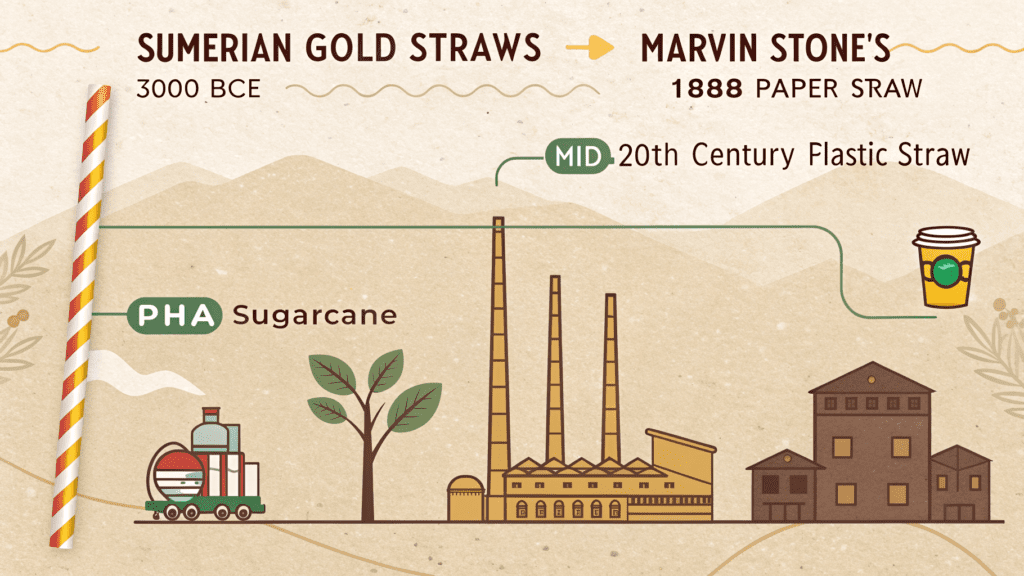
B. The Tipping Point: Environmental Awakening & Regulatory Action
The surge in public and industry awareness of plastic pollution began in the late 2000s, notably highlighted by the viral 2015 sea turtle video. This awareness ignited a wave of regulatory action:
- EU Single-Use Plastics Directive (SUPD), July 2021: A landmark ban on various single-use plastics, including plastic straws (even PLA), with limited hospital exceptions. This directive also imposes Extended Producer Responsibility (EPR) schemes, holding producers responsible for waste management and clean-up costs.
- U.S. State-Level Bans: A patchwork of regulations exists, including outright bans (e.g., Seattle in July 2018, New York, New Jersey, Vermont, Washington) or “straw upon request” policies (e.g., California in January 2019, New York City). Some US cities have even banned “compostable plastic” (PLA) if not truly non-plastic.
- Industry Response: Major corporations like Starbucks (2018 pledge, introducing Green Planet™ plant-based straws in Japan in 2024), McDonald’s (global paper straw transition), Hyatt, American Airlines, and Disney have made significant commitments, demonstrating successful shifts that lead to increased customer satisfaction and positive media coverage.
This period marked a definitive turning point for foodservice, making compliance and sustainable sourcing a top priority.
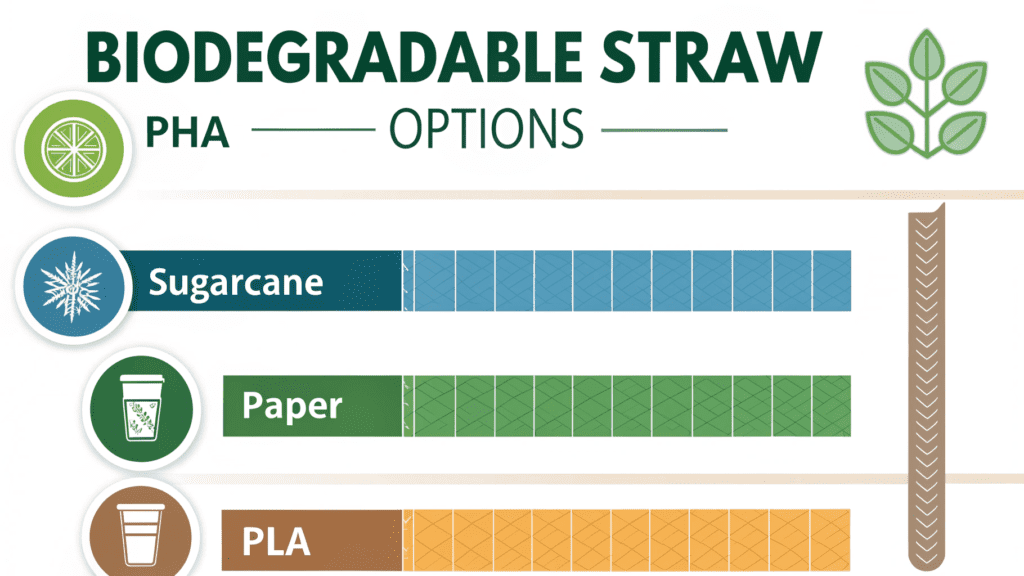
III. Navigating the Green Landscape: Choices, Trends, and Truths
A. Understanding Your Options: A Deep Dive into Biodegradable Materials
Choosing the right biodegradable straw involves understanding their unique properties and suitability for different foodservice applications. We will focus on the new generation of PLA-free options:
- Polyhydroxyalkanoates (PHA):
- Pros: PHA straws mimic the feel and durability of traditional plastic, are marine & home/industrial compostable, durable, suitable for hot beverages (up to 100°C/212°F), FDA-approved, and do not produce microplastics. They have a significantly reduced carbon footprint (up to 70% less emissions than plastic).
- Cons: PHA straws can be more expensive than other biodegradable options due to their complex fermentation production process, though costs are improving. Critically, the EU classifies PHA as a “non-natural polymer” due to the industrial fermentation process, thus banning single-use PHA straws as “plastic” despite their biodegradability, which significantly impacts their use in Europe. PHA straws are also designed for single-use, perpetuating continuous resource consumption.
- Sugarcane (Bagasse):
- Pros: Made from bagasse, the fibrous byproduct of sugarcane juice extraction, repurposing agricultural waste in a circular economy. They are often 100% PLA-free and PFAS-free, durable, water-resistant, suitable for hot beverages (up to 90°C/220°F), home compostable (typically 3-6 months), and taste-free. Sugarcane straws are generally permissible under the EU SUPD as a natural, unchemically modified fiber.
- Cons: While durable for hours, some may soften slightly in very hot liquids, though they remain functional. Some early versions (V1) contained PLA, which is now prohibited in the EU. Optimal degradation benefits require access to composting facilities. They have a shelf life of 10-18 months and require proper storage.
- Paper (for context):
- Pros: Widely available, cost-effective (compared to some bio-plastics), biodegradable, recyclable.
- Cons: Prone to sogginess, losing over 75% firmness after 20 minutes and collapsing in 30-60 minutes, which can frustrate customers. They can impart a “papery” taste, and some studies have found harmful PFAS (Per- and Polyfluoroalkyl Substances) content.
- Polylactic Acid (PLA) (for context):
- Pros: Similar look/feel to plastic, sturdy for cold drinks.
- Cons: Primarily requires industrial composting facilities; it takes years to break down at room temperature in landfills or oceans, behaving like conventional plastic. Softens and warps in hot liquids (above ~60-70°C). Crucially, the EU SUPD bans PLA straws as plastic.
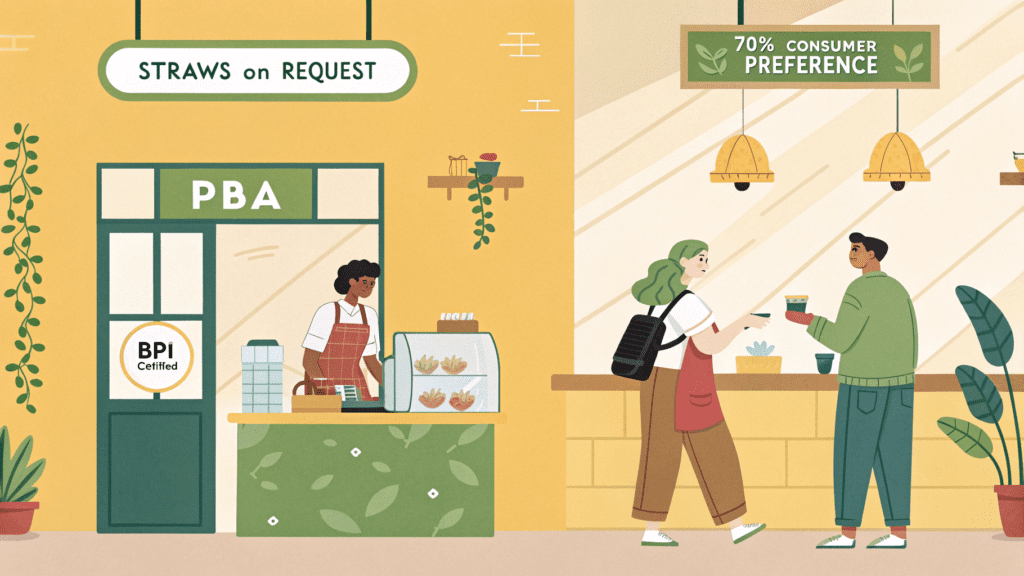
B. Current Market Adoption & B2B Buyer Preferences
The global biodegradable straw market is experiencing a significant boom, projected to grow from USD 41.52 billion in 2024 to USD 178.87 billion by 2031 (a CAGR of 23.20%). North America and Asia Pacific are leading market shares and growth.
Businesses prioritize sustainability for CSR goals, regulatory compliance, and brand enhancement. Functionality (durability, hot/cold suitability) and cost-effectiveness are key decision factors. Success stories from major chains like Starbucks, McDonald’s, Hyatt, American Airlines, Disney, Sweetgreen, Dunkin’, Tous les JOURS, and First Watch highlight successful transitions leading to increased customer satisfaction.
Ready to lead the change? 🌱 Contact us today to request a quote or get complimentary samples of premium sugarcane and PHA straws for your coffee shop or foodservice business. It’s time to join the ranks of sustainable cafes and restaurants turning the tide on single-use plastic – one straw at a time. Your customers will thank you, and so will the planet!
C. Addressing the Elephant in the Room: Challenges & Misconceptions
- Cost Barrier: Biodegradable straws are generally more expensive than traditional plastic (e.g., paper straws 5-12 cents vs. plastic <2 cents). However, this must be weighed against the “true cost” of plastic pollution ($75 billion annually to society) and the long-term benefits of enhanced brand reputation and customer loyalty. Sugarcane straws are competitive with paper straws when purchased in bulk.
- The “Biodegradable” Myth & Greenwashing: Many “biodegradable” plastics (like PLA) require specific industrial composting conditions and may behave like conventional plastic in landfills or oceans, contributing to pollution. Actionable Advice: Emphasize the importance of clear “compostable” certifications (e.g., OK Compost Home/Industrial) over vague “biodegradable” claims.
- PFAS Concerns: Studies (2019-2024) have detected harmful “forever chemicals” (PFAS) in many paper and plant-based straws. Actionable Advice: Seek “PFAS-Free” certifications when sourcing. Sugarcane straws are typically PFAS-free.
- Composting Infrastructure Challenge: While sugarcane and PHA straws are compostable, widespread access to commercial composting facilities is not universal in the US, highlighting the importance of home compostable options.
IV. Strategic Sourcing & Future-Proofing Your Business
A. Key Supplier Considerations for B2B Buyers
To make a confident and compliant choice, B2B buyers must prioritize:
- Non-Negotiable Certifications:
- Compostability: Look for BPI Certified Compostable, DIN CERTCO, TÜV Austria (OK Compost Industrial/Home, Marine Biodegradable).
- Biobased Content: USDA BioPreferred Program verifies renewable resource content.
- Food Safety: FDA Food Contact Safety Guidelines, LFGB, Good Manufacturing Practices (GMP).
- Sourcing & Safety: FSC-certified sources (for paper straws), and crucially, PFAS-Free verification.
- Logistics & Scalability: Inquire about typical production lead times (e.g., 15-35 days), Minimum Order Quantity (MOQ), and discuss flexibility for initial trials. Leverage the cost-effectiveness of bulk and wholesale purchasing for significant savings.
- Customization for Brand Alignment (OEM Opportunities): Consider custom logo printing (colorful inks), laser engraving (bamboo), and bespoke designs to reinforce your brand identity. Ensure availability of different diameters, lengths, and shapes (straight, flexible, spoon), and packaging options (bulk, individual paper wraps).
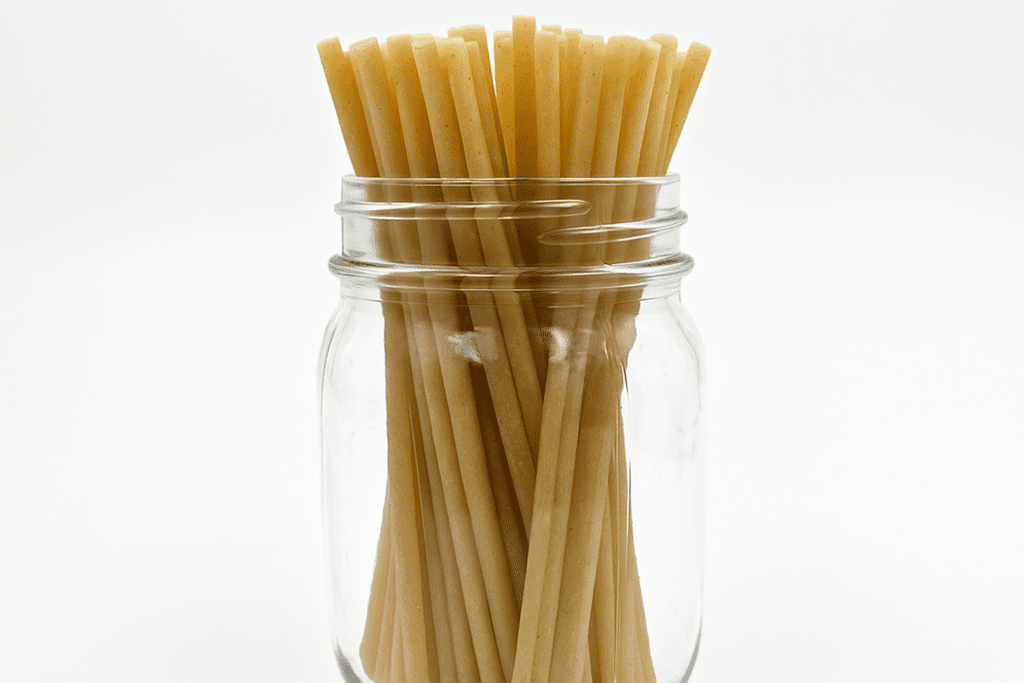
B. The Business Case for Adoption: Beyond Compliance
Switching to compostable, PLA-free straws offers tangible business advantages:
- Compliance with Current (and Future) Regulations: Align with growing laws banning single-use plastics, future-proofing your operations against the next wave of plastic restrictions.
- Appeal to Eco-Conscious Consumers: Over 70% of consumers prefer sustainable brands, enhancing your brand and building customer loyalty.
- Improved Customer Experience: Durable, taste-neutral straws eliminate common complaints associated with soggy paper, leading to higher customer satisfaction.
- Contribute to a Circular Economy: Utilizing agricultural byproducts and truly compostable materials reduces waste and carbon footprint.
- Ease of Disposal & Waste Management: Compostable straws can often go into food waste or compost bins, simplifying waste sorting and potentially saving on disposal costs.
- Marketing & Storytelling Opportunities: Highlight your “compostable straws initiative” on menus, signage, and social media, positioning your cafe as a leader in sustainable practices and generating positive PR.
C. Actionable Steps: Implementing Your Sustainable Straw Strategy
- Assess Your Needs: Conduct an internal audit of current straw usage, considering beverage types (hot/cold, thin/thick) and volume.
- Pilot Program: Initiate a trial phase with a selection of biodegradable materials, gathering feedback from both staff and customers on performance and preference.
- Staff Training: Educate your team on the new materials, proper handling, and the correct disposal methods (e.g., differentiating industrial vs. home compostable) to maximize environmental benefits.
- Customer Communication: Proactively communicate your sustainability commitment through menus, signage, and social media to reinforce brand values and educate consumers. Consider offering straws “upon request” to further reduce waste.
- Beyond the Straw: Position this switch as a stepping stone within a larger, holistic sustainability strategy, exploring other waste reduction strategies, reusable systems, and responsible sourcing.
V. Future Outlook: Beyond 2025 – Continuous Innovation & Global Impact
The global eco-friendly straws market is set for continued robust growth, with projections to reach $19.36 billion by 2029 and $25.1 billion by 2035 (7.3% CAGR).
• Emerging Innovations: Anticipate breakthroughs in materials, coatings for enhanced durability, and true biodegradability in diverse environments (marine, home compost). This includes advanced PHA production (genetic engineering, new substrates like food waste) and novel plant-based materials like seaweed, rice, coffee grounds, coconut, and cellulose acetate.
• Cost Optimization: Economies of scale and technological advancements are expected to drive down the cost of biodegradable straws, making them even more accessible.
• Holistic Sustainability: The shift to biodegradable straws is part of a broader industry movement towards comprehensive sustainable practices, integrating with other eco-friendly disposables and waste management solutions. Hotels, for example, are moving towards carbon neutrality, integrating AI for resource management, sustainable design, and circular economy initiatives. This reflects a shift from sustainability as a “marketing add-on” to a “cost-avoidance strategy” for procurement, driving efficiency and resilience.
The time to act is now. Aligning with sustainable practices is not just about compliance but seizing a competitive advantage in a rapidly evolving market. By adopting these next-generation PLA-free straws, you demonstrate your commitment to a sustainable future, delight your customers, and future-proof your business operations.
Ready to lead the change? 🌱 Contact us today to request a quote or get complimentary samples of premium sugarcane and PHA straws for your coffee shop or foodservice business. It’s time to join the ranks of sustainable cafes and restaurants turning the tide on single-use plastic – one straw at a time. Your customers will thank you, and so will the planet!






